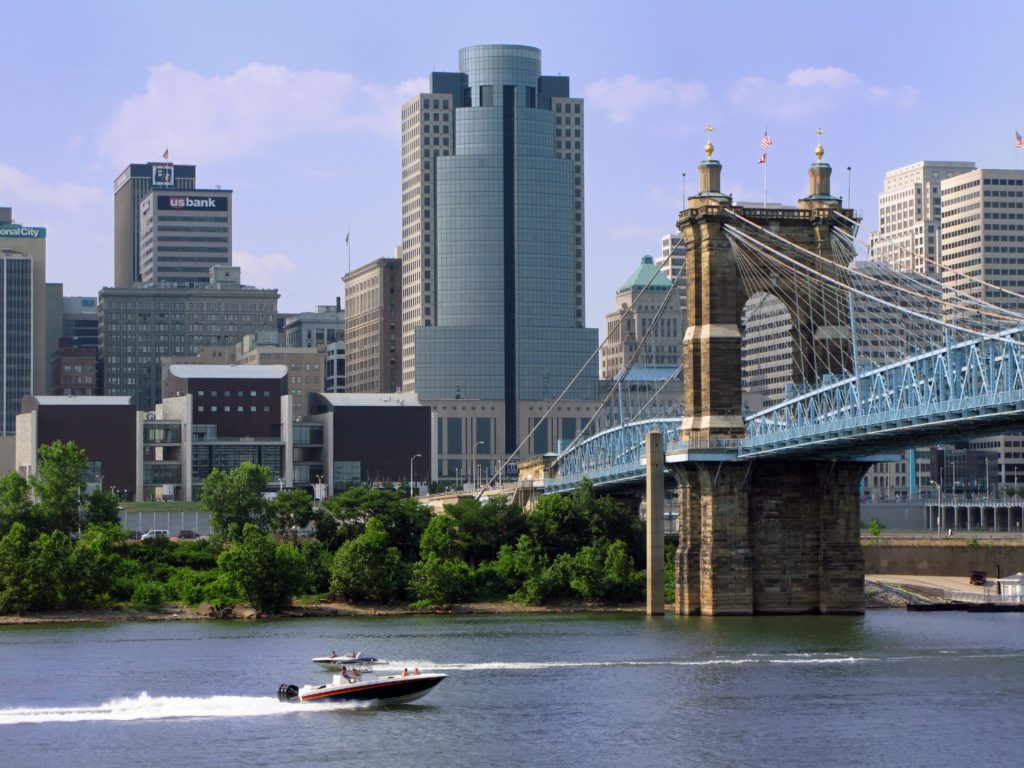
Amazon aside, heartland leaders are increasingly confident that they can create and sustain their own tech ecosystems. In addition to a lower cost of doing business than their coastal peers, mid-American cities demonstrate multiple strengths as sites for homegrown and imported tech companies.
These include a much lower cost of living than in places like Manhattan and San Jose, strong educational institutions, a pace and quality of life that appeal to many, logistical advantages and, as their denizens see it, the absence of wayward values displayed in coastal tech enclaves that range from abuse of privacy to political extremism to misogyny.
“We believe fundamentally that individuals shouldn’t have to be forced to trade off location for vocation,” says Monty Hamilton, CEO of Rural Sourcing, an Atlanta-based startup that employs coders and other tech workers in six interior cities: Augusta, Georgia; Oklahoma City; Albuquerque; Mobile, Alabama; Jonesboro, Arkansas, and Fort Wayne, Indiana. “We also believe clients shouldn’t have to pay extraordinary prices in places like Silicon Valley or go offshore.”
Here are four ways that heartland cities are leveraging these and other attributes and developing their own tech ecosystems:
Indigenous capital: More entrepreneurs are investing in their own heartland communities as initial digital successes pile up around the country. State and metropolitan governments are upping their efforts too.
Cincinnati is an example. There, Don Wright recently launched a new startup, Clarigent Health, just a few years after he sold his first healthcare company, Assurex, for about $410 million. “Guys like Don cash out and become part of our tech ecosystem to build a next generation of entrepreneurs,” says Rod Robinson, CEO of ConnXus, a Cincinnati-based firm that connects minority- and women-owned suppliers with customers worldwide.
Top-notch universities: Many heartland cities can take advantage of the outsized achievements of colleges and universities that include land-grant giants such as the Big Ten and Big 12 colleges, as well as standout independents and some great community college systems. To wit: 25 percent of the world’s best research universities are located within 750 miles of one another in the U.S. midsection, says consultant Larry Gigerich.
Attractive living: They can’t offer ocean views, but many inland cities have combined legacy advantages in quality of life with new vibes that attract young tech workers. Nashville and Austin, for instance, have risen to the top of new-era tech ecosystems in large part because their college graduates like to stay and live where they went to school.
Great leadership: As in business generally, sometimes individual leaders can make a huge difference. Stephen Moret, for example, spent 13 years building up the economic development capabilities of Louisiana before taking over as president and CEO of the Virginia Economic Development Partnership—just in time for northern Virginia to make its winning Amazon HQ2 bid.
“If you look at his strategy, it’s not just financial incentives but building up the educational infrastructure to help not only the business he’s incenting but other companies too,” says economic development consultant Dennis Cuneo.

Chief Executive Group exists to improve the performance of U.S. CEOs, senior executives and public-company directors, helping you grow your companies, build your communities and strengthen society. Learn more at chiefexecutivegroup.com.
0

1:00 - 5:00 pm
Over 70% of Executives Surveyed Agree: Many Strategic Planning Efforts Lack Systematic Approach Tips for Enhancing Your Strategic Planning Process
Executives expressed frustration with their current strategic planning process. Issues include:
Steve Rutan and Denise Harrison have put together an afternoon workshop that will provide the tools you need to address these concerns. They have worked with hundreds of executives to develop a systematic approach that will enable your team to make better decisions during strategic planning. Steve and Denise will walk you through exercises for prioritizing your lists and steps that will reset and reinvigorate your process. This will be a hands-on workshop that will enable you to think about your business as you use the tools that are being presented. If you are ready for a Strategic Planning tune-up, select this workshop in your registration form. The additional fee of $695 will be added to your total.

2:00 - 5:00 pm
Female leaders face the same issues all leaders do, but they often face additional challenges too. In this peer session, we will facilitate a discussion of best practices and how to overcome common barriers to help women leaders be more effective within and outside their organizations.
Limited space available.

10:30 - 5:00 pm
General’s Retreat at Hermitage Golf Course
Sponsored by UBS
General’s Retreat, built in 1986 with architect Gary Roger Baird, has been voted the “Best Golf Course in Nashville” and is a “must play” when visiting the Nashville, Tennessee area. With the beautiful setting along the Cumberland River, golfers of all capabilities will thoroughly enjoy the golf, scenery and hospitality.
The golf outing fee includes transportation to and from the hotel, greens/cart fees, use of practice facilities, and boxed lunch. The bus will leave the hotel at 10:30 am for a noon shotgun start and return to the hotel after the cocktail reception following the completion of the round.